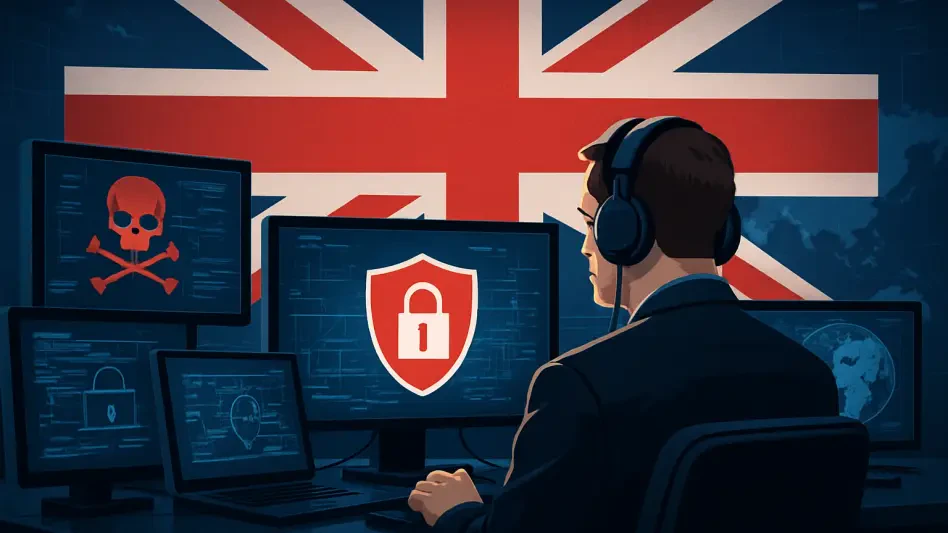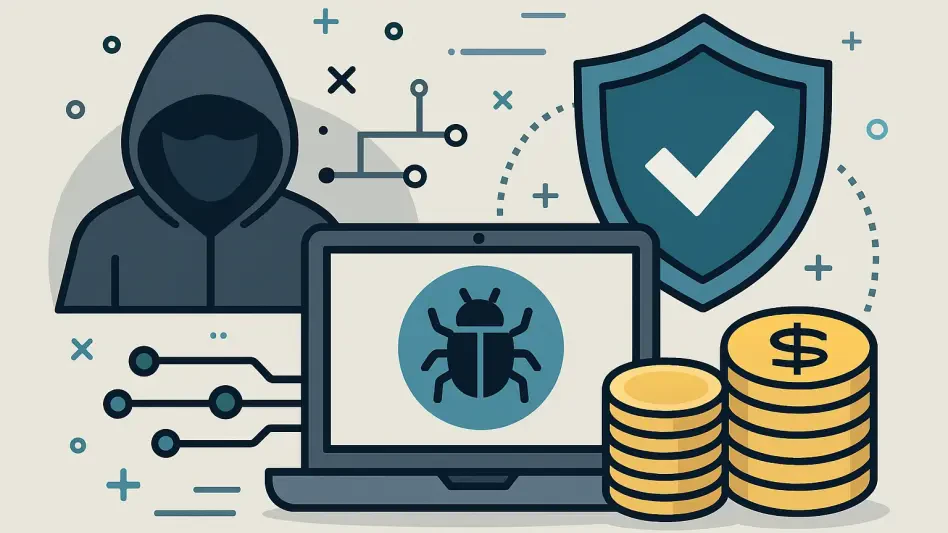In today’s rapidly evolving workplace, the concept of a secure office has undergone a dramatic transformation, driven by the rise of hybrid work models that blend physical and digital environments, making security a complex challenge. No longer confined to four walls and a traditional firewall, the modern office spans coworking spaces, home setups, in-office hot desks, and mobile users carrying critical enterprise data on their devices. This shift has redefined the security perimeter, making it a complex web of users, access points, and devices that transcend physical boundaries. As a result, the once-clear separation between cybersecurity and physical security has become a significant vulnerability. Addressing this gap through convergence is now essential to protect smart building access, ensure safe employee movement, and safeguard data in an increasingly borderless world. The inability to stop a digital breach with a physical lock or counter a stolen badge with a firewall highlights the urgent need for an integrated approach. This article explores the driving forces behind this convergence, the challenges it presents, and the strategies and technologies shaping a unified security framework.
1. Understanding the Shift to a Borderless Perimeter
The traditional notion of workplace security has been upended by hybrid work, where employees operate across diverse locations and devices, blurring the lines between physical and digital realms. This new reality means that a breach in one domain can quickly spill over into another, such as a compromised badge system granting unauthorized access to sensitive server rooms. Smart buildings equipped with advanced technologies like sensors and biometric readers often lack integration with cybersecurity systems, leaving dangerous gaps in protection. These disconnected data silos prevent a cohesive response to threats that span both environments. Identity has emerged as the new perimeter, requiring real-time access controls that consider physical presence, device status, and user history, whether an individual is on-site or remote. Without this integration, organizations remain exposed to risks that exploit the divide between physical and digital security measures.
Moreover, the urgency for convergence is underscored by the increasing sophistication of cross-domain threats in a hybrid work landscape. A hacked collaboration tool, for instance, might reveal physical office layouts or meeting schedules, enabling malicious actors to plan targeted attacks. Industry leaders like Microsoft and Cisco are already paving the way with solutions that bridge these domains. A notable example involves Krones AG, which leveraged Microsoft Intune to monitor devices, physical spaces, and hybrid security gaps effectively. Such cases demonstrate that convergence is not a theoretical concept but a practical necessity. As threats continue to evolve, the integration of cybersecurity and physical security becomes a critical defense mechanism to protect assets in an interconnected world.
2. Crafting a Roadmap for Integrated Security
Convergence between cybersecurity and physical security is not merely a technological upgrade but a comprehensive project encompassing people, policies, and platforms. A practical roadmap, drawn from real-world enterprise implementations in sectors like government, financial services, and healthcare, offers a structured approach to achieving this integration. The process begins with assessing the risk landscape, rather than jumping straight to vendor solutions. Key questions include identifying who controls specific doors, which systems store location data (such as HRIS or IAM), how visitor access is tracked, and whether outdated facilities still sync credentials. This initial step focuses on aligning physical controls, digital systems, and hybrid occupancy trends to create a clear picture of vulnerabilities that need addressing.
The next phase involves integrating identity across platforms to establish a unified model, moving away from separate systems for building access and digital logins. By linking physical access systems with identity providers like Azure AD or Okta, organizations can correlate events such as badge swipes, desk bookings, biometric unlocks, and network logins in real time. Following this, conditional access policies based on physical location should be developed—blocking or alerting on discrepancies like a user badging in but logging in from a different IP, disabling guest Wi-Fi for overstaying visitors, or verifying remote meeting room access. Tools like Cisco Meraki and Microsoft Intune facilitate presence-aware network controls, enhancing security cohesion.
Finally, situation-based security protocols should be implemented using collected data to proactively address risks. Policies might include blocking high-risk devices in busy areas, restricting sensitive data access to secure on-site networks, and flagging unusual behavior patterns. Team alignment is equally vital; even with technology in place, success hinges on collaboration. Joint exercises with IT and facilities staff, integration under a shared risk framework, standardized reporting, and starting with a pilot at one location can build momentum for broader adoption. This holistic approach ensures that convergence addresses both technological and human elements of security.
3. Navigating the Obstacles to Convergence
Achieving cybersecurity and physical security convergence is far from straightforward, as numerous structural and cultural barriers often impede progress. Legacy silos pose a significant challenge, with facilities frequently relying on systems like LenelS2 or Honeywell, while IT departments operate on platforms such as Entra ID or Cisco ISE. This disconnection results in a lack of shared visibility and accountability, especially when breaches cross domains. Without real-time correlation between these systems, organizations struggle to respond effectively to threats that exploit both physical and digital vulnerabilities, leaving critical gaps in their defense strategies.
Beyond technical silos, regulatory hurdles add another layer of complexity to convergence efforts. Standards like GDPR, HIPAA, and ISO 27001 impose strict requirements on data retention and user consent, and badge data linked to digital logins becomes regulated personal information. Crafting policies that comply with these frameworks while maintaining security is a delicate balance. Additionally, internal pushback often arises from turf wars between IT and facilities teams, with differing priorities and resistance to oversight stalling initiatives. Privacy concerns further complicate the issue, as monitoring must be robust without creating a surveillance-like atmosphere that alienates employees. These multifaceted challenges require careful navigation to ensure successful integration.
4. Measuring the Value of a Unified Approach
The benefits of cybersecurity and physical security convergence extend beyond risk mitigation, delivering substantial returns on investment across multiple dimensions. Cost efficiency stands out as a primary advantage, as consolidating systems reduces vendor overlap and operational complexity. Unified platforms, such as combinations like Microsoft with HID or Okta with Envoy, streamline expenses by eliminating redundant parallel systems for access control and identity management. This reduction in overhead allows organizations to allocate resources more effectively, focusing on strategic security enhancements rather than maintaining disparate tools.
In addition to financial savings, convergence significantly enhances threat detection capabilities through integrated logs and real-time analytics. Anomalies become more apparent when data from both physical and digital sources is combined, enabling faster and more accurate incident responses in a hybrid environment. Furthermore, compliance audits become more manageable with unified access logs that demonstrate proactive measures to regulators. These logs provide a clear trail of actions taken across domains, simplifying the process of proving adherence to stringent standards. The operational resilience gained from this approach positions organizations to better withstand and recover from potential breaches.
5. Exploring Innovations from Industry Leaders
Several prominent vendors are driving the momentum behind cybersecurity and physical security convergence, offering integrated solutions that address the complexities of hybrid work environments. Microsoft’s Entra ID, for instance, partners with HID Global to incorporate door swipes into identity management, enabling context-based access models, centralized lifecycle management, and dynamic policies based on location. Such integrations ensure that access privileges adapt seamlessly to both physical and digital contexts, reducing the risk of unauthorized entry or data exposure in interconnected systems.
Similarly, Cisco’s Identity Services Engine (ISE) collaborates with Meraki to link Wi-Fi and badge systems, providing location-aware network permissions. This setup ensures that devices can only connect when users are in approved zones, adding a layer of verification to prevent unauthorized access. Meanwhile, Okta’s platform integrates with Envoy to ingest visitor data, including check-ins and meeting room access, into comprehensive identity tracking. These advancements by leading vendors illustrate the growing maturity of the convergence landscape, offering organizations tangible tools to bridge the gap between physical and digital security domains with precision and efficiency.
6. Anticipating the Future of Converged Security
The evolution of hybrid work continues to shape the tools and tactics behind cybersecurity and physical security convergence, with emerging technologies offering innovative ways to manage access and detect threats. Digital twins, for example, allow security teams to create virtual models of physical spaces like lobbies or server rooms, simulating breach scenarios to test response protocols across domains. Behavioral biometrics add another layer of protection by analyzing user interaction patterns, such as keystroke speed or mouse behavior, to identify potential impostors even if credentials are compromised. These advancements signal a shift toward predictive and adaptive security measures.
Additionally, sensor fusion through IoT technologies enables building systems to cross-check access logs with actual physical presence, alerting teams to discrepancies like a badge swipe without entry. The adoption of 5G and edge AI further enhances real-time enforcement by processing access decisions on-site without cloud delays. Unified risk scoring, which combines digital and physical activity into a single metric, streamlines monitoring by reducing alert fatigue. These forward-looking trends indicate that convergence will continue to evolve, providing organizations with sophisticated tools to stay ahead of cross-domain threats in an increasingly fluid workplace landscape.
7. Moving Forward with a Cohesive Security Vision
Reflecting on the journey toward cybersecurity and physical security convergence, it becomes evident that merging these domains is not just a response to hybrid work challenges but a fundamental shift in safeguarding modern workplaces. The efforts to unify digital and physical perimeters addressed vulnerabilities that once lingered in silos, proving that integrated systems are indispensable for tackling cross-domain threats. The groundwork laid by aligning identity models and fostering team collaboration sets a precedent for how security can be both proactive and resilient.
Looking ahead, the next steps involve mapping risk surfaces comprehensively, ensuring that both digital and physical entry points are accounted for in risk assessments. Investing in vendors with proven integration capabilities will be crucial to maintain system cohesion. Unifying teams across IT and facilities through pilot projects can demonstrate tangible value, paving the way for broader implementation. Ultimately, designing security frameworks where access, control, and accountability are seamlessly intertwined offers a blueprint for protecting assets in a hybrid world, ensuring that organizations remain agile and secure against evolving threats.








